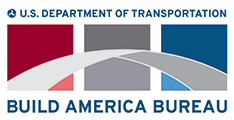For many transportation agencies in the U.S. public-private partnerships (P3s) offer an opportunity to tap new financing sources and transfer certain project delivery risks.
These partnerships differ from standard procurement practice wherein the public sponsor controls each phase — design, construction, finance, operation and maintenance – of the project’s lifecycle. In a P3, a single private entity (which may be a consortium of several companies) assumes responsibility for multiple phases, accepting long-term risks in return for prospective rewards.
DOT has developed this report to describe how government agencies can best work with the private sector to deliver transportation facilities that protect the public interest.
Chapter 1 Introduction: the US P3 Experience
This chapter provides an overview of P3s and of the current state of the market in the U.S.
Chapter 2 Legislation and Policy
Topics discussed include P3 options contained within enabling legislation, the creation of a centralized P3 unit, the authority given to this P3 unit to negotiate contract terms, and the timing of legislative approvals. The section on policy covers public approvals and stakeholder input, stakeholder education, the creation of a pipeline of P3 projects, and the involvement of other departments in the public agency.
Chapter 3 P3 Project Development
Topics discussed include P3 project definition, with the inclusion of the project in long-range transportation planning documents and the relationship between the P3 project development process and the environmental documentation process. Topics also include project evaluation, with the use of multi-level screening and other analyses to select a P3 project, as well as the assessment of retained public liabilities. The section on public and industry outreach discusses the use of a proactive public outreach strategy and how to further develop projects with industry input. Finally, the last section of this chapter covers unsolicited proposals, describing how to manage the receipt of these unsolicited proposals, and how to initiate a competitive procurement after approval of an unsolicited proposal.
Chapter 4 P3 Procurement
Topics discussed include how to facilitate a competitive environment and foster private interest by shortlisting qualified bidders, using a draft Request for Proposal (RFP) process, allowing for alternative technical concepts, and paying a stipend for unsuccessful compliant bids. The section on bid evaluation discusses the concept of “best value” and how to minimize negotiations after the selection of the preferred bidder.
Chapter 5 Monitoring and Oversight
Topics discussed include performance monitoring, with the definition of output-based performance metrics, the establishment of a system for monitoring P3 performance and how to provide performance incentives through a payment mechanism. This chapter also discusses how to establish a long-term collaborative working relationship between the public agency and the private entity.
Chapter 6 Cross-Cutting Themes
This chapter discusses important issues that are present throughout the P3 lifecycle and are particularly important for project success.


